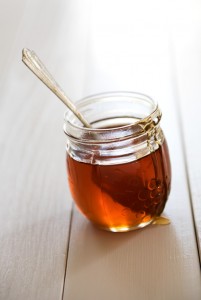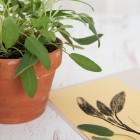The 8s
THE BEE’S Knees
December, 2015
Everything’s better with bees. It’s kind of a big statement, but when you consider that one of every three bites of food we eat depends on pollinators, it’s easier to see the accuracy. It’s also why the worldwide decline in bee populations is making headlines. Researchers don’t know the exact cause, but there are things you can do to help. And you don’t have to be a beekeeper to do them. Here’s a list to get you started.
-
 Plant a garden. A single pot of flowers is all it takes to provide some pollen and nectar for bees. You just need to know their favourites. Annuals such as verbena, cosmos and marigolds are always a hit with bees and are great choices for containers and flower beds. If you have room for a tree or shrub, consider planting a mock orange, lilac, dogwood or crabapple. Just be sure to read the labels and make sure you have the proper space and sunlight to accommodate your choices. Here’s a fun fact: bees are colour-blind to red, so stick with yellow, pink or purple flowers.
Plant a garden. A single pot of flowers is all it takes to provide some pollen and nectar for bees. You just need to know their favourites. Annuals such as verbena, cosmos and marigolds are always a hit with bees and are great choices for containers and flower beds. If you have room for a tree or shrub, consider planting a mock orange, lilac, dogwood or crabapple. Just be sure to read the labels and make sure you have the proper space and sunlight to accommodate your choices. Here’s a fun fact: bees are colour-blind to red, so stick with yellow, pink or purple flowers. - Buy local. Supporting beekeepers in your area is as simple as visiting your farmers’ market. Buying honey made from local suppliers and produce from farmers who limit pesticide use while plants are in bloom is no small gesture. With research pointing to loss of habitat and heavy use of pesticides as leading causes of declining bee populations, it’s important for consumers to explore all their options.
- Learn about mason bees. Mason bees are a type of native bee that look a bit like black flies. Although they don’t make honey, they are incredible pollinators and will even work in the rainy, cold conditions that honeybees won’t tolerate. Because mason bees are solitary and don’t live in hives with queens to protect, they are not aggressive and will only sting if trapped or squeezed. That makes them ideal guests. To encourage their stay, give them plenty of blossoms and an open spot of mud to use in their nests.
- Build a mason bee house. Because mason bees don’t live in hives, it’s important to protect the natural habitats they nest in, such as woodpecker holes, hollow stems and other small, natural cavities. You can also buy or build them a bee house. To make one, simply drill a bunch of smooth, deep holes into a log (a few finger-widths apart), and hang it at least one metre above the ground in a spot that’s protected from the rain and faces east or south—mason bees are cold-blooded and count on the sun’s heat to warm them up. You can also look for bee houses at your local garden centre.
- Give bee pollen a try. Bee pollen is being touted as a new superfood that can cure anything from sore joints to bitter colds. But while the research to substantiate those claims is lacking, what’s undisputable is that bee pollen is nutritious. Amino acids, fats, carbohydrates, potassium, magnesium, zinc, iron—bee pollen has it all. But, as with all natural supplements, it’s a good idea to check with your doctor before giving bee pollen a try, especially if you have allergies, a compromised immune system or are pregnant or breastfeeding.
- Opt for honey. This one is kind of obvious, but there are a lot of great reasons to buy local honey. Great flavour is one of them. Alberta is known for its dandelion, clover and wildflower honey. And when beekeepers extract and process that honey in small quantities, those delicate flavours of the season are preserved. Honey marketed as “raw” contains all the pollen, enzymes and micronutrients that would normally be filtered out or destroyed when the honey is heated during processing. In fact, if you buy local honey throughout the season, you’ll notice that the flavour, colour and texture will change to reflect what plants were blooming at that time.
- Use beeswax candles. If you’ve ever burned a beeswax candle, you already know how amazing they smell. But did you know that when you burn beeswax, you’re also cleaning the air? It’s a simple but brilliant process called ionization. Unlike all other candles, beeswax releases negative ions when it burns. And those ions neutralize the positive charge carried by dust and other airborne contaminants. Just be sure to talk to the vendor or check the packaging for wording such as “100% pure beeswax.” The word “pure” on packaging often means that a product contains only 51% of the main ingredient.
- Make your own lip balm. There are lots of recipes online for making your own lip balm, but most contain a variation on the following four ingredients: unbleached beeswax, almond or coconut oil, honey and essential oil (such as peppermint or grapefruit). Personalizing your own recipe is as simple as using your favourite essential oil or adding a dab of lipstick for a hint of colour. A great project for birthday parties or for giving away as wedding favours. t8n













